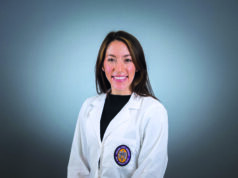
2020 was a herald year. It ushered in a global pandemic and a reckoning with issues of diversity, equity and inclusion (DEI) in our workspaces. Vascular surgery, by nature of the diseases we encounter and our longitudinal relationship with our patients, have been front and center in both the clinical and social effects of the pandemic. Resultingly, we have been at the cutting edge of surgical treatment for COVID sequelae, and have the opportunity to be at the center of effective diversity efforts. However, the plethora of DEI efforts sometimes seems overwhelming, superficial or forced; and to the vascular trainee—you!—it can be another item to check off our ever-growing competency list.
So how do we begin to engage DEI efforts as a trainee in a meaningful way? If you’re like me, your plate is already full. There is no easy answer here, but from talking with colleagues who are also navigating this, and from taking notes from our colleagues in other specialties, here are a few simple ideas on how to approach this as a trainee.
Listening to our patients to really hear them
Clinical medicine trains us to listen for buzz words, symptoms and pattern recognition. We learn much about pathophysiology. However, what we are not taught is how our patients experience the disease that we are tasked with helping them through.
To get at this important and critical communication point, we must listen to what our patients are telling us and what is not being said. Ask open-ended questions without judgement. Acknowledge their reality. If appropriate, verbalize the obvious emotion. Listen. Don’t rush to fill the silence void. Patients know you’re busy, and most want to respect your time, but what active listening does is communicate that their perspective is valued and heard.
To our minoritized patients, many of whom have been explicitly or implicitly told that their opinions, experiences and expressions don’t matter, this simple act is much appreciated—even if you eventually have to relay bad news regarding their disease diagnosis and prognosis. Everybody desires to be truly heard, and not summarily dismissed or ignored. When you acknowledge the patient experience of their disease, both trainee and patient grow towards a common health goal.
Checking our implicit biases during patient care
We all have biases based on our individual experiences, expectations, upbringing and cultural norms. As surgical trainees, who are often tired and running on caffeine, it can be easy to revert to how we see the world and assume that everyone sees it that way as well.
It can be easy to revert to common stereotypes and tropes when that consult page comes in at the end of your call shift, or when you have to explain instructions to a difficult patient after you’ve just endured a negative evaluation, or when you finally get to see a patient who has “been lost to follow-up” or has “no-showed” clinic appointments.
This is not fair to the patient—nor to you, as a surgeon. We must seek to know our biases (there are several online tools for this), and then inwardly reflect on them. This is easier said than done but the effort to do it will pay off, especially when communicating with our minoritized patients and/or anyone who doesn’t share the same heritage and upbringing as you. And this brings me to my next point.
Sitting with discomfort and learning
Sometimes, our biases show up when we least expect it. A situation may make us uncomfortable, unpleasant or upset—and we can’t put a precise finger on why. I love these moments, personally, because they reveal deeply held convictions, thoughts or experiences that beckon us to examine them thoughtfully.
Other times, our biases are pointed out to us by our seniors, peers or friends. These are all opportunities for self-reflection, a resetting of our priorities, and if needed, personal education. Just as we strive to improve technically and in clinical judgement as our training goes on, and we constantly evaluate our own performances when we hit negative feedback, I advocate that we sit with our discomfort and use it to propel us to grow.
Recruiting talent
There is a linear relationship between being a trainee and increasing responsibility. One year you’re the medical student, and in a few short years, you become the chief. No matter where you are on this journey, you have the power to positively influence someone else, especially those who are historically underrepresented in our profession.
These don’t have to be grandiose efforts. It can be as simple as giving positive feedback when someone does something right; or letting your junior know that you value them and their work; or helping someone navigate the hidden curriculum at your institution; or encouraging that student who is on the fence to seriously consider vascular surgery, letting them know that they belong.
There is no doubt that having a surgeon who shares your experience and culture (and maybe even language) goes a long way in building a positive therapeutic alliance, and we should recruit as much talent to our team as possible.
This list is by no means exhaustive. Rather, I write this to show that engaging in meaningful DEI efforts as a trainee doesn’t need big budgets or lofty programs to be impactful, but can begin with a kind word, a listening ear and a reflective attitude. To our minoritized patients, colleagues and juniors, these are what make a difference in the day-to-day grind that is vascular surgery. May we be up to the task of becoming competent, confident and compassionate surgeons.
Christopher Audu, MD, is a vascular surgery resident at the University of Michigan in Ann Arbor, Michigan, and the Vascular Specialist resident/fellow editor.












